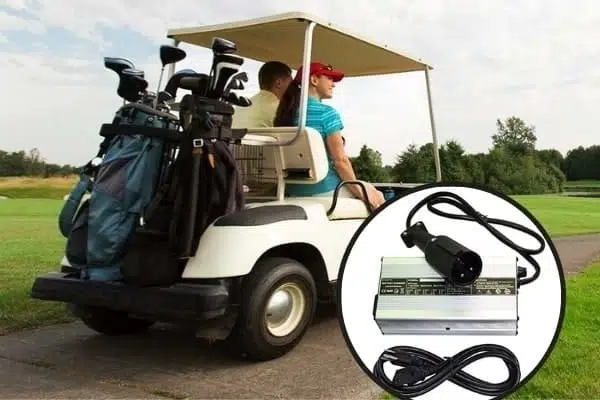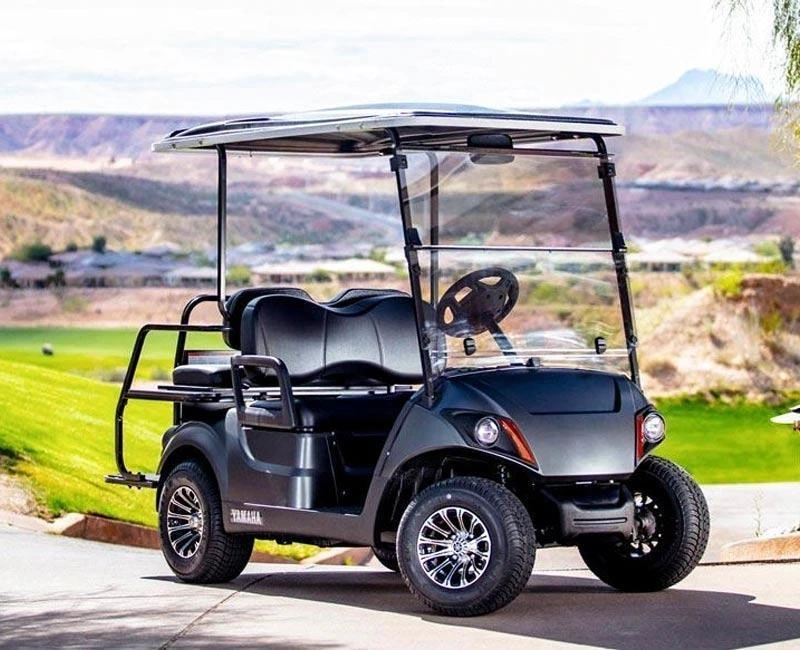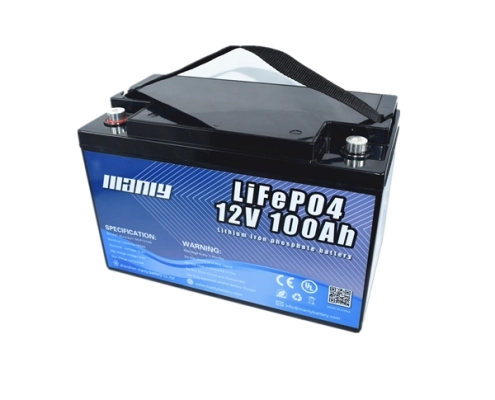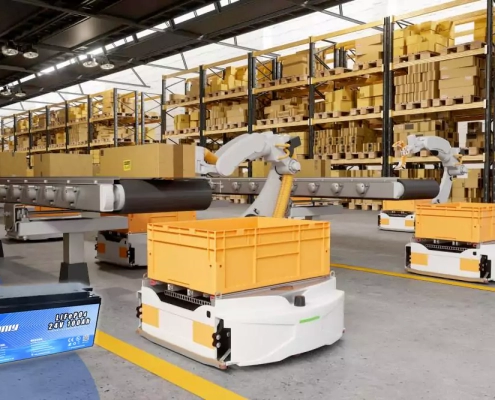Expert Tips on Golf Cart Battery Charging Times
Table of Contents
- Expert Tips on Golf Cart Battery Charging Times
- 1. Understanding Battery Types and Their Charging Times
- 2. Charger Types and Their Role in Charging Times
- 3. Overcharging and Undercharging: The Effects on Your Battery
- 4. Optimizing Battery Maintenance for Efficient Charging
- 5. The Influence of External Factors on Battery Charging
- 6. Troubleshooting Slow Charging Issues
- 7. Answering Frequently Asked Questions About Golf Cart Battery Charging Times
- 8. Looking Ahead: The Future of Golf Cart Batteries and Charging
- 9. Expert Tips and Tricks to Reduce Golf Cart Charging Times
- 10. Conclusion: Key Takeaways on Golf Cart Battery Charging Times
- Learn More About Battery
With every sunrise and every round on the green, golf cart owners often ask the essential question: “How long to charge golf cart batteries?” There’s much more to this inquiry than simply plugging in your golf cart and hoping for the best. This comprehensive guide, “Expert Tips on Golf Cart Battery Charging Times,” aims to shed light on this crucial aspect of owning a golf cart.
We delve into various battery types and how they impact your charging times, and we’ll also explore the vast world of charger varieties and their role in enhancing or reducing charging duration. You’ll learn about essential battery health aspects, such as the effects of overcharging and undercharging, and how optimal maintenance can significantly influence the charging process.
The influence of external factors, such as weather, on battery charging is another topic we’ll cover in-depth. We’ll also present a detailed troubleshooting guide to address slow charging issues and answer the frequently asked questions revolving around golf cart battery charging times.
As we look forward, we will touch on the future of golf cart batteries, discussing quick-charge and high-efficiency options that could revolutionize the game. So, sit back, grab your favorite cup of coffee, and join us on this informative journey as we demystify the science and art behind golf cart battery charging times.
1. Understanding Battery Types and Their Charging Times
In the world of golf carts, the type of battery you use can make a significant difference in performance, longevity, and charging time. Whether you’re using lead-acid batteries, the traditional choice for most golf cart owners, or you’ve opted for the more modern lithium batteries, it’s crucial to understand how different batteries affect charging times.
Traditional Lead-Acid Batteries vs. Modern Lithium Batteries
Lead-acid batteries are the most commonly used type in golf carts. They are often affordable and relatively easy to maintain. These batteries typically require between 8-12 hours to charge fully from a completely depleted state. However, newer technologies like lithium golf cart batteries offer a more efficient alternative. The best lithium battery for a golf cart can provide similar performance in a lighter, more compact form, and with faster charging times.
The Rising Popularity of Lithium Batteries
Lithium batteries are becoming increasingly popular in the golf cart industry due to their many advantages. First, they are lighter than lead-acid batteries, which can help reduce the overall weight of the golf cart for better performance and efficiency. Secondly, they have a higher energy density, meaning they can store more energy in a smaller space. Finally, they can charge much faster than traditional lead-acid batteries, usually in 2-3 hours, a fraction of the time lead-acid batteries take.
Choosing the Best Lithium Golf Cart Battery
When it comes to selecting the best lithium golf cart battery, there are a few considerations to keep in mind. One of these is the voltage. The best golf cart batteries 48v can offer excellent performance and long life, making them a great choice for most golf carts. They provide the power necessary for your golf cart to function optimally and ensure a smooth and comfortable ride on the course.
Another consideration is the quality of the battery. The best lithium golf cart batteries are designed to last for years, making them a cost-effective choice in the long run. They also require less maintenance than lead-acid batteries, saving you time and effort.
3 key factors make lithium batteries superior to lead-acid batteries
Enhanced Lifespan and Performance
Let’s consider the example of a high-traffic golf course, where golf carts are in use all day. A traditional lead-acid battery golf cart might need a battery replacement every 4-5 years, while a golf cart equipped with a lithium battery can typically run for around 10 years before needing a replacement. This difference in lifespan makes a significant impact on maintenance costs over time. Furthermore, lithium batteries don’t experience a decrease in performance as they discharge. This means that a golf cart using a lithium battery will operate at peak performance throughout the entire round of golf, unlike lead-acid battery golf carts that might slow down as the battery depletes.
Rapid Charging and Efficiency
Consider another scenario, a golf resort where golf carts are frequently used for short periods and then returned for charging. A traditional lead-acid battery could take up to 8-12 hours to fully recharge, which might not be practical in such a busy setting. In contrast, a lithium battery can be fully recharged in just 2-3 hours, meaning the golf cart can be back in action much quicker. Moreover, lithium batteries can handle partial charging without affecting their lifespan, which means they can be topped up during a lunch break or downtime without any adverse effects.
Weight Savings and Energy Efficiency
Lastly, let’s take the example of a golf course with challenging terrain, where lighter golf carts have an advantage. A lithium battery typically weighs around 1/3 of an equivalent lead-acid battery, resulting in a much lighter golf cart. This weight reduction translates into improved energy efficiency and better handling, making it easier to navigate uphill paths and uneven surfaces. Additionally, the lower weight also means less wear and tear on the golf cart’s components, contributing to lower maintenance costs over time.
These examples highlight the significant advantages of lithium batteries, especially in terms of lifespan, charging efficiency, and weight reduction. They also underline why many golf cart owners and operators are opting for lithium batteries for their golf carts.
2. Charger Types and Their Role in Charging Times
Just as different batteries require different charging times, the type of charger you use can also affect the time required. Standard chargers take longer but are usually more affordable, whereas fast chargers can significantly reduce charging time. However, it’s important to use a charger that’s compatible with your battery to avoid potential damage. For example, an oversized charger can cause excessive gassing and heat, leading to battery damage or even explosions.
Some common types of chargers and their role in charging times for golf cart batteries:
| Charger Type | Description | Typical Charging Time | Best Suited For |
|---|---|---|---|
| Trickle Charger | A low-current charger that is designed to keep a battery fully charged over long periods of inactivity. | Can take up to 12-24 hours to fully charge a depleted battery. | Best for maintaining the battery charge over winter or periods of inactivity. |
| Standard Charger | A common type of charger provided with most golf carts. It balances between fast charging and battery health. | Typically 8-10 hours for a fully depleted battery. | Suited for daily charging needs. |
| Fast Charger | Provides a high current for rapid charging. However, it might not be ideal for battery longevity if used frequently. | Can charge a fully depleted battery in 2-4 hours. | Best for scenarios where rapid charging is needed, like at a busy golf course. |
| Smart Charger | An advanced charger that can adapt its charging process based on the battery’s condition and needs. | Charging time varies. These chargers are more about battery health and longevity than speed. | Ideal for maintaining optimum battery health and extending battery lifespan. |
3. Overcharging and Undercharging: The Effects on Your Battery
Managing the charge levels of your golf cart battery is crucial to its longevity. Overcharging can lead to overheating, capacity loss, and shortened battery life. On the other hand, allowing the battery to discharge more than 80% or letting it sit in a low charge state for extended periods can also decrease its lifespan and capacity. A good practice is to charge your batteries fully after each use, even if you’ve only used the cart for a short time.
4. Optimizing Battery Maintenance for Efficient Charging
Regular maintenance is key to prolonging your golf cart battery’s life and ensuring efficient charging. This includes keeping the batteries clean, as dust and grime can cause problems. Regularly watering your batteries and ensuring that the water levels are adequate is also crucial, as too little water can affect the battery’s performance. Finally, regularly inspecting your battery and keeping connectors tight can prevent unexpected issues and help maintain efficient charging times.
5. The Influence of External Factors on Battery Charging
External factors like temperature can have a significant effect on your golf cart’s charging time. Charging batteries in hot conditions can reduce the efficiency of the charging process. For every 18° F (10° C) rise above room temperature (77° F or 25° C), battery life decreases by 50%. Hence, it’s advisable to charge your golf cart in cool conditions and keep the batteries in a cool, dry place.
| External Factor | Description | Influence on Charging Time |
|---|---|---|
| Ambient Temperature | The temperature of the environment where the battery is being charged. | Extreme temperatures, both hot and cold, can increase charging times. Batteries charge most efficiently at room temperature. |
| Battery Age and Condition | The overall health and age of the battery. | Older batteries or those in poor condition may take longer to charge or may not hold a full charge. |
| State of Discharge | How depleted the battery is at the start of charging. | A battery that is fully discharged will take longer to charge than one that is only partially discharged. |
| Charger Condition | The condition and efficiency of the charger being used. | A malfunctioning or inefficient charger can result in longer charging times. |
| Usage Patterns | How and when the golf cart is used. | Frequent, heavy use can deplete a battery faster, leading to longer charging times. |
6. Troubleshooting Slow Charging Issues
Slow charging can be a result of various issues. These could range from damaged or loose cables, incorrect charger voltage, or even the presence of dirt and grime on the battery terminals. Regular inspection of the battery, including cables and connectors, can help identify and resolve these issues. A problematic charger can also be a reason for slow charging, and it might need replacement.
7. Answering Frequently Asked Questions About Golf Cart Battery Charging Times
There are always going to be questions when it comes to charging golf cart batteries. After all, the process is not as simple as plugging in your phone before you go to sleep. There are various factors to consider and details to understand to make the most out of your battery’s lifespan and performance. In this section, we’ll address some of the most common questions we receive from golf cart owners about battery charging times.
Question 1: How often should I charge my golf cart batteries?
A common misconception is that you should only charge your batteries when they’re nearly dead. In reality, it’s best to recharge your batteries after every use, regardless of how far you’ve traveled. This approach helps extend the life of the battery and ensure your golf cart is always ready for use.
Question 2: Can I overcharge my golf cart batteries?
Yes, overcharging is a real risk that can shorten the lifespan of your batteries. However, modern golf cart battery chargers are often equipped with automatic shut-off features that prevent overcharging. They do this by detecting when the batteries are fully charged and then discontinuing the power supply.
Question 3: Why does my golf cart battery take so long to charge?
There can be several reasons for this. One of the most common is that the battery has aged and can no longer hold a charge as effectively as it used to. It could also be due to external factors like temperature or the type of charger being used. Refer back to the previous sections of this blog post for a comprehensive understanding of these factors.
Question 4: Do different types of golf cart batteries have different charging times?
Absolutely. As we’ve discussed earlier in the post, lithium-ion batteries typically charge faster than lead-acid batteries, for instance. The specific charging time can vary depending on the battery’s brand, age, and condition, among other factors.
8. Looking Ahead: The Future of Golf Cart Batteries and Charging
As we step into the future, the landscape of golf cart batteries and their charging protocols is poised for significant transformation. Technological advancements, environmental concerns, and a shift towards energy efficiency are paving the way for innovative solutions that can enhance the efficiency, lifespan, and overall performance of golf cart batteries. In this section, we’ll explore some of the anticipated trends and how they may impact your golfing experience.
The Rise of Lithium-Ion Batteries
The increasing prevalence of lithium-ion batteries is one trend we can’t ignore. Offering advantages like a longer lifespan, quicker charging times, and lower maintenance needs, lithium-ion batteries are rapidly becoming the preferred choice for golf cart owners. The transition from traditional lead-acid batteries to lithium-ion counterparts aligns with the global shift towards cleaner, more sustainable energy solutions. As technology progresses, we can expect these batteries to become even more efficient and affordable.
Smart Charging Solutions
The future of golf cart battery charging is smart. Imagine a battery charger that not only knows when to stop charging to prevent overcharging but can also adapt its charging protocol based on the battery’s age, temperature, and health. This smart technology is already being introduced into the market, with golf cart owners seeing the benefits in the form of extended battery life and enhanced performance.
Solar-Powered Charging
With a growing emphasis on renewable energy, solar-powered charging for golf carts is an intriguing prospect. Solar panels can be installed onto the roofs of golf carts, harnessing the sun’s energy throughout the day. This renewable energy source can either directly power the cart or charge the onboard battery. While currently, solar technology for golf carts is in its nascent stages, the potential for its widespread adoption is vast.
Wireless Charging
The concept of wireless charging has already revolutionized the smartphone industry, and it’s expected to do the same for electric vehicles, including golf carts. Imagine driving your golf cart onto a charging pad and having your batteries charge automatically, with no need for plugs or cables. While the technology is still in its early development stages for golf carts, it offers promising possibilities for the future.
Looking ahead, the future of golf cart batteries and their charging protocols seems promising, packed with innovations that could enhance user convenience, efficiency, and environmental sustainability. While the timing and widespread adoption of these advancements remain to be seen, it’s clear that we are moving towards a more efficient, greener, and smarter era of golf cart usage.
9. Expert Tips and Tricks to Reduce Golf Cart Charging Times
While understanding how long it takes to charge golf cart batteries is essential, finding ways to reduce charging times can further optimize your golfing experience. Below are a few expert tips and tricks that can help you achieve faster and more efficient charging while maintaining the longevity and performance of your batteries.
Proper Maintenance
The condition of your batteries plays a significant role in how quickly they can charge. Regular maintenance, including keeping the battery terminals clean and free from corrosion, can go a long way in ensuring efficient charging. It’s also important to check and maintain the appropriate water levels in lead-acid batteries as low levels can lead to longer charging times.
Optimal Charging Environment
The environment in which you charge your batteries also influences the charging time. Ideally, batteries should be charged in a cool, dry place as extreme temperatures can affect battery performance and charging efficiency. Try to avoid charging your batteries in direct sunlight or freezing conditions.
Smart Charging
Investing in smart chargers can significantly reduce charging times. These chargers use algorithms to determine the most efficient charging process based on the battery’s condition, size, and temperature. By accurately gauging the battery’s needs, smart chargers can deliver a faster, more efficient charge while also prolonging battery life.
Use the Right Charger
Using a charger that’s designed for your specific battery type can greatly enhance charging efficiency. Different battery types (lead-acid, lithium-ion, AGM, etc.) require different charging protocols, so it’s crucial to use a charger that’s compatible with your batteries.
Prevent Deep Discharges
Try to avoid letting your golf cart batteries become deeply discharged before recharging them. The deeper the discharge, the longer it takes to recharge. Regular, shallow discharges followed by prompt recharging can help maintain your battery’s health and reduce charging times.
Regularly Check Battery Health
Regularly checking the health of your batteries can help identify issues that might lead to longer charging times. This includes checking for damaged cells, testing voltage levels, and ensuring there’s no build-up of lead sulfate crystals on lead-acid batteries.
By following these expert tips and tricks, you can ensure a quicker and more efficient charging process for your golf cart batteries. Remember, battery health and longevity is the key to a great golf cart experience, so proper care and charging practices should be a priority.
10. Conclusion: Key Takeaways on Golf Cart Battery Charging Times
In conclusion, understanding how to properly charge your golf cart batteries can significantly enhance your golfing experience, extending the life of your batteries and promoting optimal performance. From recognizing the best types of batteries for your specific needs, identifying the role of various charger types, to factoring in the external influences on charging times, each aspect is crucial in ensuring efficient use and maintenance. Remember that the ‘one size fits all’ rule doesn’t apply here; your approach should be as unique as your golf cart. Our expert tips offer a solid starting point in this quest. So, start applying these insights today and get ready to drive your golf cart to new levels of reliability and efficiency. Don’t forget to reach out to us if you need any further assistance. Happy golfing!









